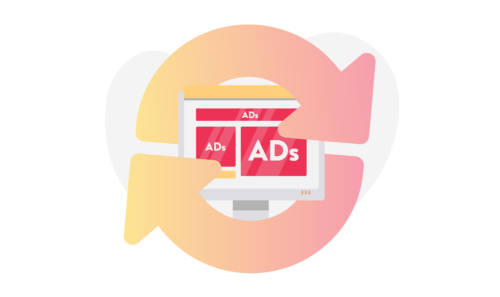How to Acquire Premium Demand for Your Inventory (PART 2)
Taking good care of the product, most popular Viewability boosters, Ad Layout improvements and quality of the content – that’s what we discussed in the first part of this article. Now it’s high time to focus even more on the User Experience, Brand Safety and – last but not least – high quality Demand Suppliers.
Read the first part of the article on acquiring premium demand here.
Remember Your Audience
Your ad stack can work reliably, but you may still experience CPM fluctuations when different audiences visit your site.
The reasons can vary: the type of content you create and / or the ways your audience discovers it. Pay attention to the page and session RPMs on things like traffic source, content type, section and page layout.
Boost high-quality traffic. If you encounter a traffic source that brings you the most valuable users, utilize it to its fullest potential.
Keep User Experience in Mind
Ad Density
As a Publisher, you may no longer be able to look at your website as the average user without a business approach. It’s worth taking a step back, though, and reviewing websites. High ad-to-content ratio may lead users to install ad blockers so as to pass by the website, and for the mobile devices, it can be percevied as the violation of Better Ads Standards.
Core Web Vitals
For Google it is important not only what users read on Publishers’ sites, but also the users experience that Publisher delivers, that is why metrics such as loading speed and broadly understood user behaviour and experience (UX) became essential. To support that, in May 2020 Google announced changes to the search ranking, which affects the quality of the site – Core Web Vitals.
Core Web Vitals is a set of 3 indicators: loading time, interactivity and visual stability.

Following this standardization is important because Google better evaluates inventory that meets these conditions.
Valid and Corretly Implemented CMP – Compliant with TCF 2.0
In order to be compliant with EU GDPR and ePrivacy Directive, all website owners must get consent from users from Europe. This implies that CMP implemented on websites must be compliant with Transparency and Consent Framework Version 2.0 (TCF 2.0) which was created by IAB to support publishers, technology providers and advertisers in complying with the regulations.
Why should Publishers pay attention to this now? The most obvious reason should be the security of their own business. This compliance is required by other vendors, including Google, who may simply stop trading with you.
Brand Safety and Brand Suitability
Working on inventory quality is also important from the Brand Safety and Brand Suitability perspective. According to the IAB, both of these standards were defined to support brand’s reputation safety by protecting them from displaying ads next to inappropriate types of content, which could have a negative influence on users opinion.
Publishers who offer a premium inventory are preferential. These tend to be safer locations for ad placement, but at the same time – more expensive. In short, the lower the Advertiser bids, the less premium (or more risky) the location may be perceived.
Google defines key areas to support a healthy digital advertising ecosystem—one that is trustworthy and transparent, and works for users, Advertisers, and Publishers.
This advertising policies cover four broad areas:
1. Prohibited content: Content you can’t advertise on the Google Network
2. Prohibited practices: Things you can’t do if you want to advertise with Google.
3. Restricted content and features: Content you can advertise, but with limitations.
4. Editorial and technical: Quality standards for your ads, websites, and apps.
The second important consequence of granular controls and classifications is that it moved Advertisers away from the keyword-only approach, ensuring not only that each brand’s custom metrics align with their values, but also empowering Advertisers to allocate budgets and as a positive consequence – unlocking the maximum ad inventory potential of Publishers.
Sales Strategy for Premium Demand
Are you still looking at Direct and Programmatic as separate strategies? Building the value of inventory requires their cooperation. Plan and balance your sales holistically.
Traditionally, Publishers have focused on filling out Direct Sales and then selling what is left programmatically. Once you’ve collected the data, the targeting, and scaling infused in daily transactions by impressions, marketers pay a higher automated CPM, sometimes even competing with direct selling prices.
Following this balanced strategy, your earning potential will be much higher for the same amount of supply.
Another important thing is to prioritize – properly segment your clients, and determine which clients your Direct Sales team is approaching. Clearly divide what types of inventory you’re aligning with each sales method – direct, private marketplaces or Open Auction – and when you’re shifting inventory to fill all business obligations. The key point is – if someone is ready to pay more for the same impression programmatically within Header Bidding, then why decline that offer?
High Quality Demand Suppliers
Building the setup it is important to remember that not only the quantity of suppliers can influence the quality of your inventory.
The amount of revenues is affected by the quality as well as the number of demand partners. A good idea is to add other networks that can participate in addition to the Google Doubleclick AdExchange network, in Open Auction. More demand partners means more competition for the offered inventory (also premium by your selected yieldgroups), more pressure on the price in the Open Auction for AdX as well.
The benefit is that we can make our premium inventory available to new Open Bidding (OB) partners without the need for new pricing rules – OB respects our Unified pricing rules set. Another advantage is that payments are sent to the publisher within 30 days of the end of the month.
– Vladimir Martinka, Yield Manager at Ringier Axel Springer SK
On a daily basis we at Yieldbird work with premium demand SSPs in different models. Some of them book inventory (in the Open Market) in order to guarantee high CPM campaigns, which can be valuable to the Publishers, especially for those who are having difficulties with Direct Sales (or do not have a Direct Sales team at all).
For any questions you may have on improving the quality of your inventory:







